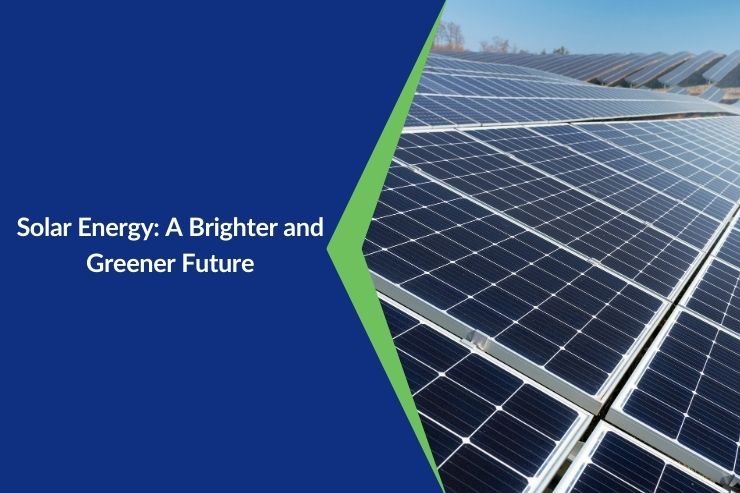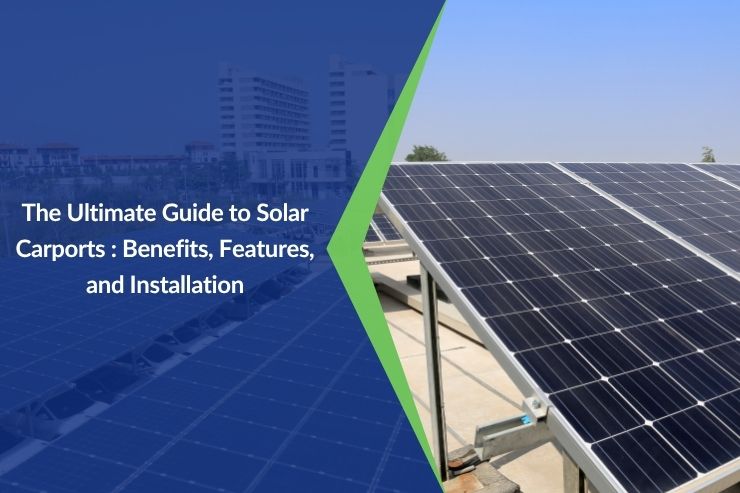Solar renewable energy is redefining the way we generate power today, using large scale resources from the sun to meet modern-day energy needs. With growing global demands for cleaner energy, the area of solar technology within the renewable landscape has become more evident than ever.
With solar installations expanding at a rate of more than 20% worldwide this technology not only promotes environmental sustainability but also boosts economic development by generating millions of jobs globally. The rising feasibility and decreasing costs make solar power a fundamental element in transitioning towards an energy-rich future.
How Solar Renewable Energy Works?
The two main technologies by which solar energy captures sunlight are photovoltaic cells in solar panels and solar thermal systems. Both are very important for lessening our dependence upon fossil fuels and helping to introduce more renewable and sustainable energy solutions.
Solar Panels and Photovoltaic Cells
Solar panels, equipped with photovoltaic cells have become the frontline warriors in this war against dependence on fossil fuels. Therefore, these cells are highly efficient and present a sustainable way of directly converting sunlight into electricity. Photovoltaic cells play a very important role because they can capture solar radiation and turn it into clean energy, contributing to the energy matrix with minimum environmental impact.
Solar Thermal Systems
On the other hand, solar thermal technology captures the sun’s heat. This is not only about generating electricity but also about harnessing the sun’s heat for water heating, residential heating, and even cooling systems through solar-powered absorption chillers. Solar thermal systems are versatile from a domestic to an industrial scale, which makes them cornerstones of solar technology.
Benefits of Solar Renewable Energy
Solar renewable energy has several environmental and economic benefits. It makes life more sustainable while providing and enabling economic growth. By reducing greenhouse gas emissions and preserving resources, solar energy not only provides financial savings but also creates job opportunities across different sectors.
Environmental Benefits
Solar and renewable energy offer several environmental advantages. First, it significantly reduces greenhouse gas emissions. Unlike conventional power sources, solar energy does not emit CO2 during operation, making it a key player in sustainability efforts. It also aids in conserving natural resources and curbing the extraction and exploitation of finite resources common in fossil fuel processes.
Economic Benefits
Economically, solar renewable energy fosters substantial savings on energy bills over time despite the initial setup cost. It’s a long-term investment that pays financial and environmental dividends. The solar industry is a burgeoning field that spurs job creation and economic growth, offering diverse opportunities from manufacturing to system installation and maintenance.
Applications of Solar Renewable Energy
Solar energy has diverse applications in both residential and commercial sectors. It provides homeowners with energy independence and businesses with reduced operational costs.
Residential Solar Power
For homeowners, installing solar panels is a forward-thinking move that locks in energy costs and reduces reliance on grid power. Popular residential solar systems illustrate the adaptability and scalability of solar technology, making it accessible for widespread use.
Commercial and Industrial Applications
Businesses integrate solar energy to minimise operational costs and carbon footprints in the commercial realm. Large-scale solar farms and industrial solar power plants exemplify how solar applications can be upscaled to meet higher energy demands, highlighting solar’s robustness and efficiency.
Also Read – Solar Energy vs Wind Energy: Key Differences
Challenges and Solutions
Technological Challenges
While solar technology has advanced greatly, there remains room for improvement in efficiency. Ongoing advancements aim to enhance the conversion efficiency of solar panels and reduce the cost of solar energy production, making solar energy production even more accessible and practical.
Policy and Regulatory Challenges
Government policies and incentives play a crucial role in solar adoption. Effective solutions to promote solar energy include favourable regulations, subsidies, and grants encouraging residential and commercial solar technology investment.
Future of Solar Renewable Energy
Innovations in Solar Technology
The future is bright, with emerging trends in solar panel design and materials promising even greater efficiencies and lower costs. Innovations in photovoltaic materials and construction techniques continue to push the boundaries of what’s possible in solar technology.
Global Adoption and Growth
As countries worldwide strengthen their commitments to reducing carbon emissions, the adoption and growth of solar energy are set to grow impressively. According to the International Energy Agency (IEA), solar energy is leading the increase in renewable energy use, with global solar capacity expected to more than double by 2025, reaching over 1 terawatt.
This growth is supported by significant investments and technological advancements that make solar more efficient and affordable. Nations also include solar energy in their energy policies, aiming for net-zero emissions by 2050.
Conclusion
Solar and renewable energy is a key player in our journey towards sustainable and clean energy. As we face increasing environmental challenges, promoting and expanding the use of solar technology is crucial. This expansion supports a healthier planet and ensures that future generations inherit a world capable of sustaining life. Investing in solar power can significantly reduce our carbon footprint and move closer to achieving global energy sustainability. Let’s continue to embrace and advocate for solar energy as a vital solution for our environmental and energy needs.
Frequently Asked Questions
Is solar energy renewable?
Yes, solar energy is inherently renewable since it comes from the sun, which will be present for billions of years. This feature sets it apart from fossil fuels, which are finite and eventually run out when consumed.
Why is solar energy better than other renewable energy sources?
Most consider solar energy a superior source due to its abundant supply and reduced environmental impact during generation. This is in comparison with other sources, such as biomass, which may involve combustion that leads to the release of pollutants or GHGs. As opposed to hydroelectricity, which can alter ecosystems, or wind power, which affects bird populations, the production of solar energy is non-intrusive and causes no damage to habitats.
Why is solar energy considered a renewable resource?
Solar energy is a renewable resource because it is a medium that uses the sun’s radiation as a natural, unlimited energy source. Unlike the non-renewable ones consumed by extraction, it’s as long-lasting as the sun itself.
What are the environmental impacts of solar energy production?
Although the environmental impacts of solar energy production are low, especially in the operation phase, the manufacturing process of solar panels requires a substantial amount of resources and energy. Mining is involved in making solar panels with additional materials such as silicon and metals that have an added ecological footprint. These impacts often get offset by the clean energy produced over an operational lifetime that may last 25-30 years or more for solar panels.










